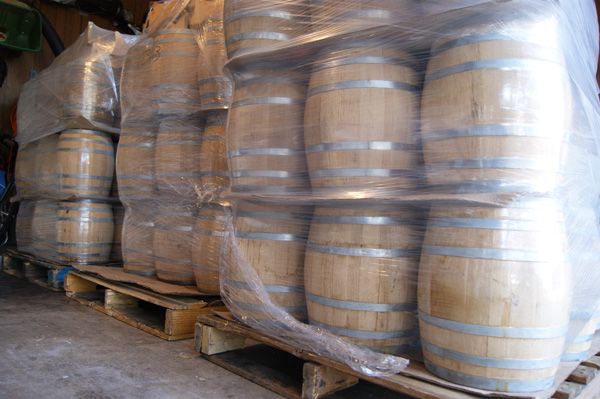Thanks for bringing up this topic. There are some parts of the answer that’ll be really obvious but like so much in winemaking, it’s often up for interpretation and the subtleties may vary from winemaker to winemaker, even in the professional world.

Let’s lay a little groundwork with the “obvious”: If you put all of your wine in new barrels (first usage), that’d be considered “100% new oak.” If, in your barrel lot (a grouping of barrels that contains the same homogenous wine from the same mother source), you’ve got one un-used barrel and one neutral barrel (has seen at least four season’s use), then that’s clearly “50% new oak.” If your barrel lot consists of two barrels, which have seen at least four season’s use, then that’s “0% new oak” or “100% used oak” or “100% neutral oak.”
After that, it’s a bit open to interpretation. That’s because the definition of what constitutes a “season’s use” can vary from winery to winery and from wine style to wine style. Additionally, barrels are made from natural materials and as such may have slight variations, especially between wood sourced from different countries and wood toasted in different ways. Typically a big red wine like a classic Cabernet Sauvignon stays in barrel for about 18 months and is bottled the winter after the subsequent harvest, while a lighter wine like Pinot Noir is aged in wood for about nine months and is typically bottled right before the next harvest comes up. For both of these wines, a “season’s use” for each wine is half or double that of the other.
For this reason, I tend to refer to “season’s use” rather than one- or two-year-old barrels . . . as I also buy barrels throughout the year and then feather them into my aging programs, it actually works best for me to track months of exposure rather than strict barrel age. Commercial wineries have fancy barcode scanning programs that track each barrel’s individual history but you can easily use a permanent marker to give a unique code to each of your barrels and track its history with a spreadsheet. That way you’ll always know how much “new wood” character any given barrel will contribute to your wine.
Don’t forget — you can also move wine around among barrel ages and types during its aging process. I’ve got a buddy who loves making super-oaky Cabs and used to joke that his wine was “200% new oak” — he achieved that by aging his new wine in brand-new barrels for about 10 months then racking the wine into another set for another 10 months before bottling the big (but too oaky for my tastes) wine. Expensive, sure, but he did get some good scores over the years, and it’s a bit of a funny story to tell as it’s indicative of his over-the-top personality.
Don’t forget — you can also move wine around among barrel ages and types during its aging process.
In the situation you describe, you’ve got all your wine in what sounds like a second-season use. If it’s a big Cabernet and you’ll be aging it in those same barrels for about 12–18 months, I think you can say you’ll get 30–50% “new wood” character out of it. The amount of new wood flavor and aromas a barrel contributes doesn’t decline in a straight line and will depend somewhat on the alcohol levels of the wines you’re making (higher alcohol extracts wood components faster). Barrels tend to lose their ability to impart new wood character after three to four season’s use but always maintain their ability to add roundness and improve mouthfeel because of the lees contact and micro- and macro-oxygenation that occurs during aging and monthly topping.
The world of barrel-aging and gauging of new oak impact is more an art than a science. Do what I always recommend, which is take good notes, and you’ll be able to build up a body of knowledge over the years.




